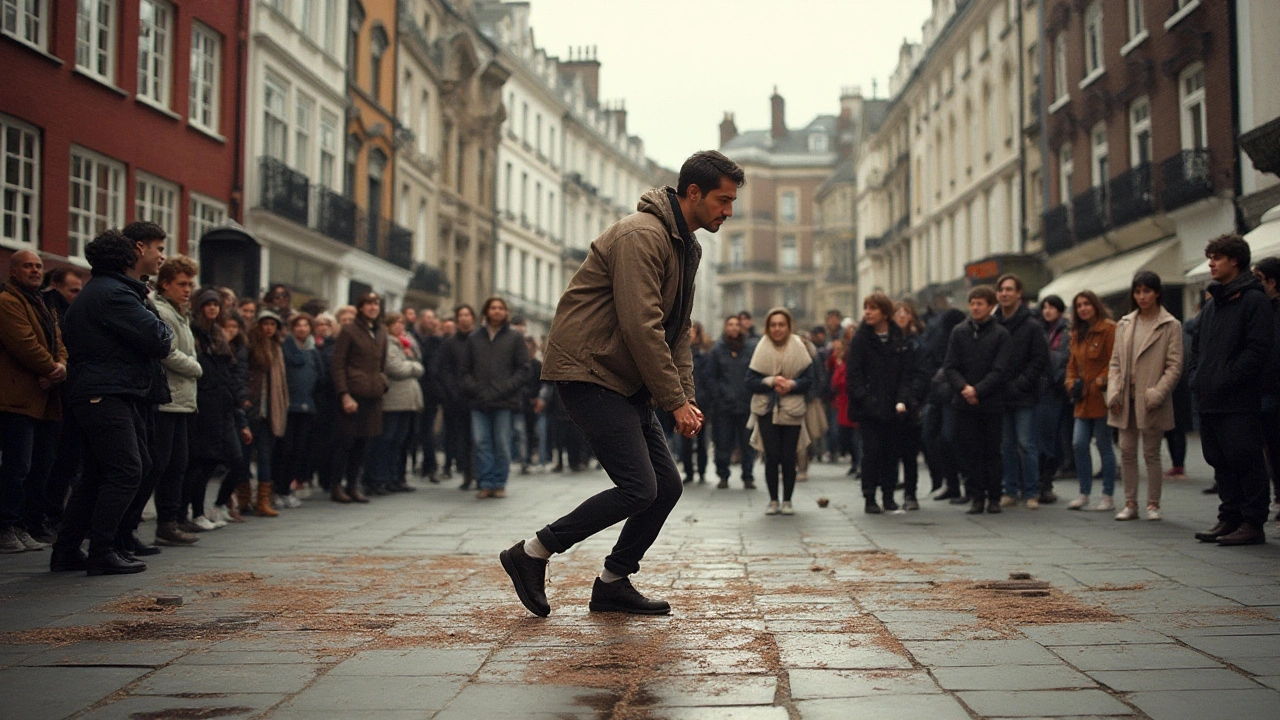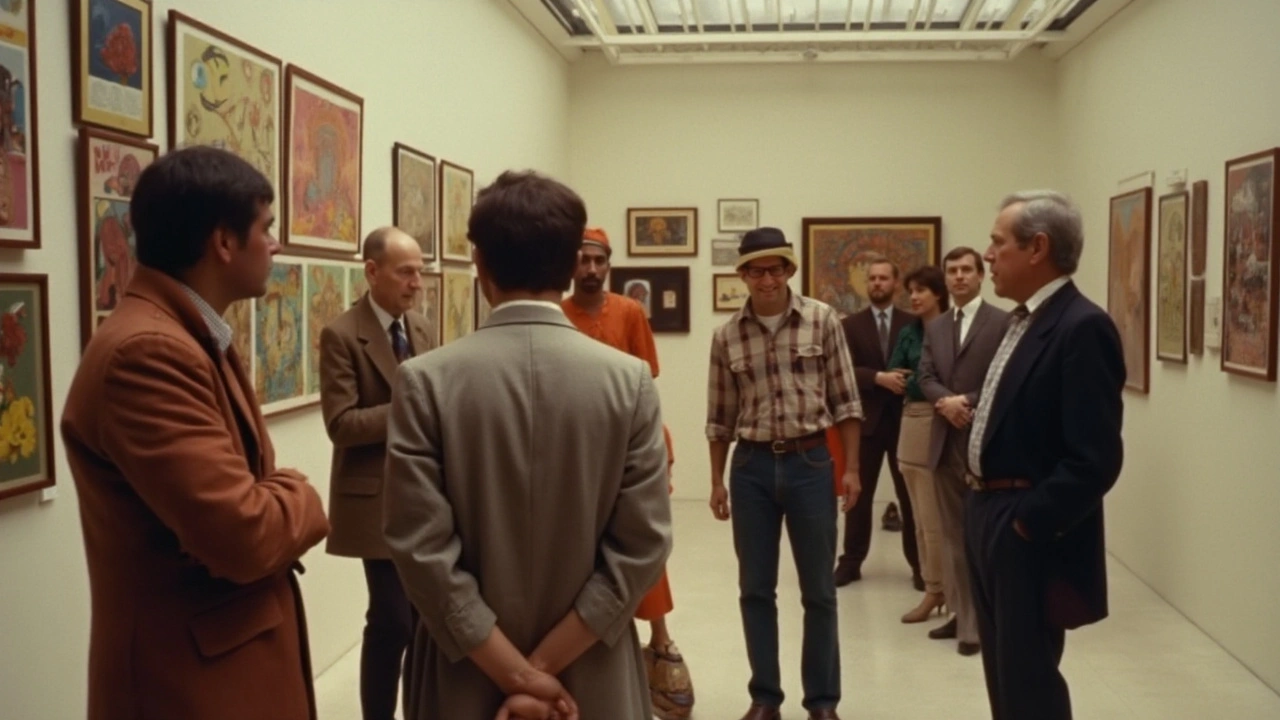Fluxus was never just about art. It was about breaking the rules, challenging perceptions, and having a good bit of fun along the way. Emerging in the 1960s, Fluxus was all about pushing boundaries.
The movement was a reaction to the rigidity of traditional art forms. It embraced an avant-garde spirit, combining different mediums to create a unique experience for the audience.
From humorous performances to odd objects, the Fluxus artists sought to blur the lines between life and art. They believed that these two should coexist seamlessly.
This article aims to unravel the essence of Fluxus, its key players, and its influence on today's art scene.
- Origins of Fluxus
- Philosophy Behind the Movement
- Key Figures and Their Contributions
- Notable Works and Performances
- Lasting Impact on Contemporary Art
Origins of Fluxus
Fluxus began as a radical, mischievous riposte to the art establishment of the 1960s. The seeds of this groundbreaking movement were sown by George Maciunas, a Lithuanian-American artist and gallery owner.
In 1962, Maciunas organized what would be the first official Fluxus event in Wiesbaden, Germany. This concert not only introduced the world to Fluxus but also questioned the very nature of art. It comprised an eclectic mix of music, poetry, performance, and visual art. Maciunas wasn't alone in this venture. Pioneering figures such as Yoko Ono, Nam June Paik, and Joseph Beuys joined hands, lending their avant-garde visions.
History shows that the early '60s were ripe for such a movement. After World War II, artists were eager to break free from the shackles of traditional art forms. They found themselves in a world that was rapidly changing, technologically and culturally. This was a time for experimentation. The spirit of rebellion and the quest for innovation was in the air.
One key aspect of the Fluxus movement was its embrace of simplicity and accessibility. Unlike other movements that required an academic understanding to appreciate, Fluxus aimed to reach the everyday person. George Maciunas famously said, "Promote a revolutionary flood and tide in art, promote living art, anti-art." The objective was clear: blur the boundaries between life and art.
The movement's name, Fluxus, is derived from the Latin word 'flux,' meaning flow. It was perfect for a movement that wanted to disrupt the stasis of the art world. The activities were spontaneous, the media varied. Artists engaged in happenings, a term for performance art meant to be unique, immediate experiences rather than lasting objects.
While initially centered in Europe, the movement quickly gained traction in the United States. Fluxus opened the door to other eclectic artistic ventures. Many young artists found themselves enthralled by its open-ended nature.
Fluxus wasn't just about entertainment; it was underpinned by serious philosophical ideas. John Cage's teachings on indeterminacy in music deeply influenced its work. Heavily drawn to Eastern philosophies, many Fluxus artists believed in the transcendence of the ordinary.
Today, Fluxus is seen as a precursor to many modern art practices. From multimedia installations to performance art, its impact is undeniable. It's remarkable how something that started as a group of rebels in the 1960s left an indelible mark on the art world.
Just as they broke down barriers, they also united people around the shared understanding that art could be anything and anywhere. Fluxus forever changed how we define and experience art.
Philosophy Behind the Movement
The Fluxus art movement was revolutionary, not just because of the works created but also due to the ethos its artists embraced. At its core, Fluxus rejected the traditional notions of what art should be. The movement thrived on the idea that art and life are inseparable, challenging the formalism that dominated the art world in the mid-20th century.
The term 'Fluxus' was coined by George Maciunas, a key figure in the movement, who envisioned a type of art that was holistic and democratic. Unlike other art forms confined within canvases or sculptures, Fluxus art aimed to be accessible and interactive. It placed high importance on the process and experience rather than the final product. This philosophy can be traced to the influence of Dadaism, which similarly aimed to defy traditional artistic conventions. Additionally, Zen Buddhism played a significant role in shaping the movement's principles by advocating simplicity and the rejection of materialism.
Maciunas and his peers—such as Yoko Ono, Nam June Paik, and Alison Knowles—were massively influenced by the teachings of John Cage, the avant-garde composer who viewed all sounds as potential music. Cage's emphasis on indeterminacy and the role of chance resonated deeply within Fluxus circles. This is why many Fluxus pieces are characterized by their unpredictability and the involvement of the audience. Performances were never scripted to the last detail; they were fluid, living entities that could develop in multiple directions.
"To establish an artistic discipline that has no artificial or academic separation between the artist's various methods of expression and what is defined generally as 'life.'" — George MaciunasWhile Maciunas's grand ideals were not always uniformly adopted by other artists in the movement, the collective shared common ground in the desire to democratize art. They sought to break down the barriers between art and everyday activities, making it possible for anyone to create and appreciate art. In doing so, they were not just creating objects or performances but also new ways of thinking and being.
Another critical aspect of Fluxus philosophy was the rejection of commercialism. The artists often produced inexpensive multiples and editions to fight against the commodification of art. They believed that true creativity cannot be measured in monetary value. Unlike the commercial galleries, Fluxus artists organized events in unconventional spaces such as railroad stations and parks, further blurring the lines between life and art.
The movement's emphasis on collaboration was also a groundbreaking aspect of its philosophy. While the art world is often portrayed as a haven for solitary geniuses, Fluxus promoted community and collective creativity. This sense of inclusivity extended to their audience, often inviting them to participate in the creation process. In this way, Fluxus was not just an art movement but a social and cultural phenomenon that encouraged people to engage more deeply with their surroundings.
This philosophy has left an enduring impact on many contemporary artists who continue to explore the interplay between life and art, the role of the audience, and the rejection of traditional and commercial frameworks. The legacy of Fluxus proves that art can be a powerful medium for radical change, not just in the realm of aesthetics but also in the way we perceive and interact with the world.

Key Figures and Their Contributions
When discussing the Fluxus art movement, it is impossible to overlook the intriguing personalities who defined it. One of the most notable figures is George Maciunas. Often described as the movement's ringleader, Maciunas was a Lithuanian-American artist who coined the term 'Fluxus' in 1961. His vision was to democratize art, making it accessible to everyone and not just the elite. Maciunas organized the first Fluxus festival in Wiesbaden, Germany, in 1962, which set the tone for what Fluxus would become.
Another central figure was Yoko Ono, whose work with performance art and happenings profoundly influenced the movement. Her piece, 'Cut Piece,' invited members of the audience to cut away pieces of her clothing, challenging traditional notions of participation and spectatorship in art. Ono's work exemplified the Fluxus ethos of breaking down the barriers between artist and audience.
"Fluxus is not a moment in history, or an art style. It is a way of doing things, a tradition, and a way of life" - Ken Friedman
Nam June Paik is often dubbed the 'father of video art' and brought a technological edge to the Fluxus movement. His innovative use of televisions and video recordings opened up new avenues for artistic expression. Paik's works often blended music, performance, and multimedia elements, making him a crucial pillar in the Fluxus community.
Another pivotal contributor was Alison Knowles, best known for her 'Event Scores,' which were instructional scripts meant to propel mundane actions into the realm of art. Her piece, 'Make a Salad,' involved creating a large salad in front of an audience, commenting on the art-making process as an everyday activity.
Dick Higgins, who coined the term 'Intermedia,' was also a significant figure. He believed in the fusion of different artistic mediums, which became a hallmark of Fluxus. His works, often blending poetry, theater, music, and visual art, showcased this philosophy to the fullest.
Wolf Vostell, another key member, integrated video, installation, and performance into his practice. His 'Dé-coll/age' technique, which involved ripping posters and layering them to create new images, questioned conventional artistic methods. Vostell’s work often had a socio-political dimension, bringing attention to contemporary issues through his art.
The contributions of these figures made Fluxus what it was: a radical, rebellious, and inclusive art movement that continues to inspire contemporary artists today.
Notable Works and Performances
It's hard to talk about Fluxus without diving into its most remarkable works and performances. One of the iconic pieces often mentioned is “Zen for Head” by Nam June Paik. In this 1962 performance, Paik dipped his head in ink and dragged it across a roll of paper, parodying traditional calligraphy. This act wasn’t just provocative. It was a statement, challenging conventional art forms.
Another standout work is George Maciunas’s Fluxkits, which were basically a collection of everyday objects and instructions for interactive art experiences. These kits included items like rubber stamps and instructions, blending art with life in a playful, participatory way. They blurred the distinction between the artist and the audience, giving everyone a role to play. Someone once said,
Fluxus is about the democratization of art; it's about involving the people in the creative process, and these kits truly exemplified that spirit.
Yoko Ono, often associated with Fluxus, created several influential works. Her piece “Cut Piece”, performed in 1964, invited the audience to cut away pieces of her clothing as she sat silently. This was an evocative exploration of vulnerability, trust, and the relationship between the artist and the spectator. It wasn't just a performance; it was a powerful commentary on the human condition.
The influence of John Cage is undeniable in Fluxus. His work “4'33"” is another legendary piece where a performer sat in silence for four minutes and thirty-three seconds. Rather than focusing on music, Cage invited the audience to listen to the ambient sounds around them. This redefined what people considered 'music' and emphasized that art is everywhere.
Dick Higgins, another key Fluxus figure, merged theater and visual art in his happening, “Danger Music #2”. He instructed the audience to scream until they lost their voices. This piece stretched the boundaries of performance art and asked participants to step outside their comfort zones, to find meaning in chaos.
The variety of works in Fluxus shows its commitment to experimentation and pushing the limits. It's a movement that embraced paradox and encouraged people to find beauty in the unexpected. As you can see, these notable works were not just about creation; they involved interaction, reflection, and a bit of humor too.

Lasting Impact on Contemporary Art
The Fluxus movement might have started in the 1960s, but its influence is evident in today's art scene. The very essence of Fluxus, which encourages blending life and art, resonates deeply in contemporary practices. That's where artists began to treat everyday experiences as art forms, significantly altering how we perceive art.
Contemporary artists often use multimedia, performance, and everyday objects to convey messages, echoing the techniques of early Fluxus pioneers. For instance, the interactive installations you see in modern galleries owe much to the Fluxus emphasis on audience participation. Take Yoko Ono's 'Wish Tree,' where she invites visitors to tie their wishes to a tree. Such engagement is a hallmark of Fluxus philosophy.
Another key aspect where Fluxus left its mark is the notion of impermanence in art. Unlike traditional art forms meant to last, many Fluxus works were ephemeral. Today, we see this in the popularity of performance art and temporary installations. Artists like Marina Abramović continue to explore these transient experiences, bridging time and space with audiences.
The DIY ethos of Fluxus is also prevalent in contemporary art. The movement's focus on simplicity and using readily available materials encourages a more accessible and democratic approach to art-making. This is apparent in the rise of street art and digital art forms, where creators use anything from spray paint to software tools to express themselves. Even social media platforms have become a canvas, reflecting Fluxus's adaptability and spontaneity.
Moreover, the playful and irreverent spirit of Fluxus can be seen in the work of contemporary artists like Maurizio Cattelan. His 'banana art' piece that sold for $120,000 is a direct nod to the ironic and humorous undertones that characterized many Fluxus works. It challenges the conventional boundaries of art, echoing the endless possibilities that Fluxus initially proposed.
"Fluxus challenged the seriousness of art, proposing that playfulness and humor were as valuable as solemn reflection," says art historian Dr. Claire Bishop. This perspective has had a lasting impact and continues to shape artistic practices globally.
To understand today's art landscape, one must acknowledge the profound legacy of Fluxus. Its ideas about the role of the artist, the nature of art objects, and the interaction with audiences continue to inspire and provoke new generations. The movement's principles laid the groundwork for movements like Conceptual Art, Performance Art, and even Digital Art, proving that the ripple effect of Fluxus is still very much alive.




